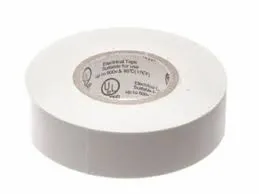The Versatility and Utility of Yellow Insulation Tape
Insulation tape, commonly known for its pivotal role in electrical work, comes in various colors and materials, with yellow insulation tape being a popular choice among professionals and DIY enthusiasts alike. What makes yellow insulation tape stand out from its counterparts? Let’s explore its unique characteristics, applications, and advantages.
The Versatility and Utility of Yellow Insulation Tape
One of the primary uses of yellow insulation tape is in electrical applications. Electricians often use this tape to wrap around wires, connections, and any other components where insulation is necessary. By providing a protective barrier against moisture and dust, yellow insulation tape enhances the longevity and reliability of electrical systems. Its high dielectric strength allows it to handle a wide range of voltages, making it suitable for both low- and high-voltage applications.
insulation tape yellow

Beyond electrical work, yellow insulation tape has found its way into various industries and home projects. For instance, in the automotive sector, it is used to insulate wires, harnesses, and for marking purposes. Its vibrant color makes it easy to identify components during repairs and maintenance tasks. Moreover, yellow insulation tape is a popular choice for color-coding systems in warehouses and manufacturing facilities. By using different colored tapes, employees can easily track and organize tools, equipment, and inventory, leading to more efficient workflow management.
The advantages of yellow insulation tape extend beyond its functional uses. It is easy to work with, allowing for quick application and removal. The pressure-sensitive adhesive ensures a strong bond, while the tape can be cut to any desired length for precision in various projects. Moreover, its weather-resistant properties make it suitable for both indoor and outdoor applications, maintaining its integrity even under harsh environmental conditions.
Another noteworthy aspect of yellow insulation tape is its contribution to safety compliance. In many industries, color-coded tapes are critical for adhering to safety protocols, indicating areas of high voltage or marking hazards. The use of yellow tape helps to prevent accidents and promotes a safer working environment, thereby safeguarding both workers and equipment.
In conclusion, yellow insulation tape is a versatile and indispensable tool in both professional and DIY settings. Its unique properties, including excellent insulation, flexibility, and visibility, make it ideal for a wide range of applications, from electrical work to color coding in warehouses. As industries continue to evolve and seek ways to enhance safety and efficiency, the demand for high-quality insulation tape, particularly in vibrant colors like yellow, is likely to grow. By understanding and utilizing yellow insulation tape effectively, individuals and professionals alike can ensure greater safety, organization, and success in their projects. Whether you are an electrician, automotive technician, or a hardworking DIYer, investing in yellow insulation tape is undoubtedly a wise choice for your toolkit.
-
XIANGFAN Rubber Tape-Ultimate Solutions for All Your Insulation NeedsNewsJun.24,2025
-
XIANGFAN Rubber Tape-Protection for Industrial and Residential ApplicationsNewsJun.24,2025
-
XIANGFAN Rubber Tape: Superior Safety and Sealing for Demanding EnvironmentsNewsJun.24,2025
-
XIANGFAN Rubber Tape: Reliable Solutions for Every Electrical ChallengeNewsJun.24,2025
-
XIANGFAN Electrical & Industrial Tape: Powering Reliability Across IndustriesNewsJun.24,2025
-
XIANGFAN Electrical & Industrial Tape: Excellence in Every ApplicationNewsJun.24,2025
